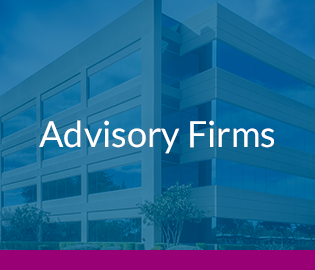 Employees are probably the largest cost to your firm, but they are also the foundation upon which the firm’s entire value proposition is built. To maximize employees’ contribution and effectiveness, your firm needs to have a range of programs aimed at investing in them — and making sure your investment pays off.
Employees are probably the largest cost to your firm, but they are also the foundation upon which the firm’s entire value proposition is built. To maximize employees’ contribution and effectiveness, your firm needs to have a range of programs aimed at investing in them — and making sure your investment pays off.
Start by understanding how each employee’s role supports the firm’s overall strategic goals. Document not just job responsibilities, but also the results those responsibilities are meant to achieve. Recruit the right people, who fit with the firm culture, and develop employees’ skills so their abilities grow as the firm’s needs expand.
Finally, include specific projections that spell out how employees’ job success will brighten their future.
KEYS TO RETENTION
Creating a loyal, skilled and motivated staff requires a disciplined plan with steady follow-through. You can boost employee retention and engagement by investing intelligently in your people. It’s worth noting that the most important factors in employee retention are similar to those in keeping great clients: Recruit the right people at the outset, then manage expectations along the way.
Reflect on that idea. To hire the right people, use well-documented job descriptions that help candidates understand the role and responsibilities of a position and the requirements of each job in terms of experience and skill base. To create such descriptions, work with your managers and top performers to identify the backgrounds, skills and personality characteristics your best employees have in common.
Then keep those workers satisfied. Do you conduct exit interviews when employees are leaving? Try adding “stay interviews” with your best long-tenured employees to find out why they have stayed with your firm.
Ask such questions as: Why did you come to work here? What would make you leave? What are your non-negotiable issues? What about your managers? What would you change or improve?
Use that information in recruiting and to strengthen your retention strategies.
PLAN CAREER PATHS
It is easy to have a mind-set focused on the near term when you have an opening, but you should recruit with a broader perspective in mind. Today’s job seeker is looking for advancement and opportunity.
Don’t just fill jobs. Instead, create career paths that define a plan for progress, development and growth over the employee’s career. Think about the progression of an employee’s capabilities, skills and experience — which may or may not relate to position or job title advancement.
In fact, a career path should include opportunities to move laterally as well as upward. For many employees, gaining in-depth knowledge and experience across the organization can be more motivating and rewarding than moving up the proverbial ladder.
For our consulting clients, for example, we create two tracks. One is a client-facing advisory and business development track, while the other is focused more on back-office client administration, operations, compliance and the financial aspects of running the business.
ACCOUNTABILITY MATTERS
It’s important to hold every employee, regardless of role, accountable for results. We find that employees who have a wide range of responsibilities often don’t know exactly what management expects from them. Morale can dip when staff fear they may not be performing up to standard.
Most of your employees have noble intentions and want to do a good job for you. Therefore, it is really important to make sure that you have a consistent process for goal setting and performance management. You can use this process to align goals and results with financial rewards, identify performance gaps, improve required skills and steer employees in their development.
I recommend formalizing the process, but even informally, you and your management team should be communicating to people on a regular basis, reinforcing what they are doing well and course-correcting when improvement is needed.
Every firm should have a compensation plan designed to attract and retain good people, motivate them to improve their performance and directly tie performance to the firm’s business plan and goals. Find a unique combination of rewards and incentives that will work best for your firm, its people and its clients.
You’ll probably want five key components: base salary, incentive compensation (both short- and long-term), benefits and other nonfinancial rewards, retirement plans and equity/ownership options. Customize each to fit your own objectives and competitive environment.
Ultimately, salary and incentives remain the primary drivers in any firm’s compensation program. Consider offering stock options or some other form of synthetic ownership (such as phantom stock) for employees who exceed performance goals and stay for a predetermined time period — say, three or five years.
WORKPLACE CULTURE
People are also motivated by having a great place to work. The best firms we work with have built a strong culture that is firmly grounded in a meaningful purpose — usually tied to helping clients make their financial goals a reality.
The ideal environment is one that supports and rewards a client-first mentality. Open and frequent communication and decisive decision-making are key characteristics of successful cultures.
Programs that support flexibility and work-life balance, allowing employees to manage their personal lives, also help create loyalty and keep employees engaged.
Rather than having separate sick leave, personal time and vacation policies, consider a unified paid time off policy that lets employees use their days off as they choose — for vacation, personal time, illness, dependent care or whatever. Such policies enhance morale because they give employees increased flexibility and responsibility. Neither you nor your employees need to justify the time off.
Even small perks can make a difference, and may carry relatively low costs. Consider offering free bagels on Fridays, dry-cleaning pickup and delivery, or in-office chair massages.
Finally, train your managers. Managerial culture drives most employee turnover, so any investment in training your line managers is time and money well spent. The success of your retention strategies ultimately depends on the ability of your line managers to deliver on the initiatives you have put in place.
WHICH TURNOVER?
One last thought: Not all retention is good; not all turnover is bad.
High retention and low turnover may be driven by lack of other opportunities and fear of financial insecurity. Employees who know they are not properly trained or have less desirable skills are less likely to test the waters. You may wind up retaining bottom performers when managers fail to identify problems or help weaker employees improve their skills.
Yet if poor performers leave on their own, you avoid needing to terminate them, and the departures offer you the chance to hire someone whose skills are more relevant.
What’s important is to make sure that the firm is retaining the right people in the right positions, with the right skills and cultural fit. Where firms have warranted turnover, they should focus on improving their competitive strengths and hiring new employees who are a better fit or bring more applicable skills.
As advisory firms consider the challenge of development and retention, they would do well to adopt this mantra: Employees are an investment, not an expense.
Kelli Cruz is a Financial Planning columnist and founder of Cruz Consulting Group in San Francisco. Follow her on Twitter at @KelliCruzSF.
From Financial Planning






